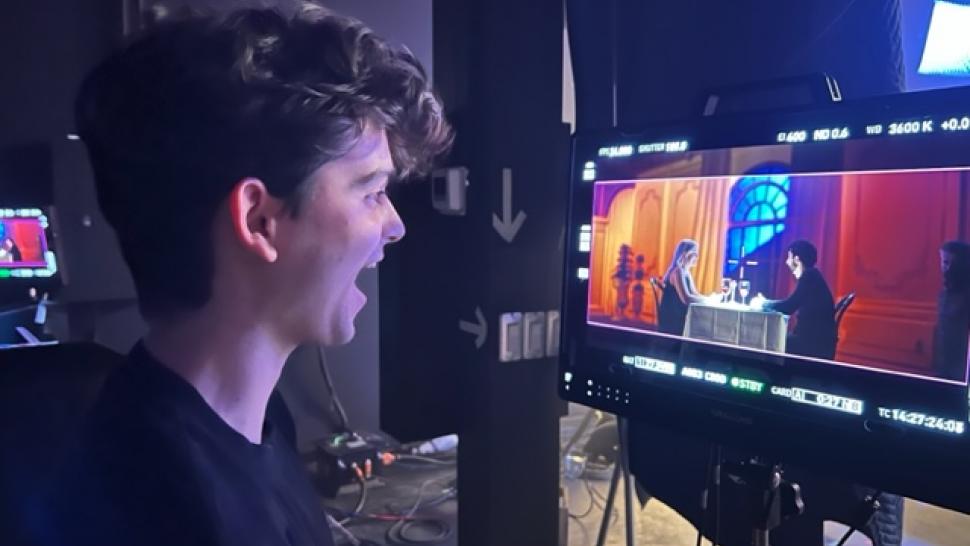
Humber College students recently had access to a high-tech virtual production space that allowed them to test the limits of their imagination and create new worlds in which to set their short films.
William F. White International’s (WFW) WFW TechLab offers an immersive, hands-on, real-time learning experience in virtual production, which is a mode of filmmaking that’s becoming increasingly popular. The students, 70 with the Film and Television Production program and 15 from Animation 3D, were invited in to take advantage of the space over a series of days in March.
The students were given an assignment to create a short film and, collectively, they created three. They had scripts and budgets and used professional ACTRA performers.
They were able to blend physical set pieces with a virtual background to create a world that looks and feels real to the audience.
Tania Goncalves is a third-year Film and Television Production student at Humber. Her short film was called Mr. Lankly’s Tall Tales and was set in a cozy little house located in the middle of a magical forest.
Many benefits to virtual production
She was able to explore technology and equipment she hadn’t previously had access to and learned a great deal from it.
Goncalves said she would jump at the chance to use the lab and LED volumes in general again. It’s less costly than shooting on location and much simpler.
“Instead of paying for multiple locations, you can hit a key on a keyboard and be transported to a new location. You can do so much in just a few days that you wouldn’t be able to if you were filming traditionally,” said Goncalves, adding the technology allows filmmakers to make the “impossible, possible.”
Donna O’Brien-Sokic is a recently retired professor and program coordinator with Humber’s Film and Television Production program.
She said virtual production represents a paradigm shift in the way film and television media is produced.
Digital images, either live action or animated using Unreal Engine, are projected onto large LED screens. A background can be filmed on location and then live composited in a film studio with the actor and lighting interacting with the filmed background in real time.
“Developing training modules that allow us to incorporate new methodologies in media production – using an LED volume, incorporating real time compositing and achieving in-camera visual effects – are incredibly important in a market where these are rapidly becoming required skill sets for emerging talent to succeed in a global, knowledge-based and technology-driven entertainment industry,” said O’Brien-Sokic.
An LED volume is a system of linked LED screens used to display footage or content.
Trevor Huys, vice president, Camera and Virtual Production with WFW, said they were thrilled to partner with Humber to set up the “students and future filmmakers for success.”
“Virtual production delivers a production experience like no other,” said Huys. “With its potential to transform the film and television industry, we feel it’s crucial to provide opportunities for filmmakers to learn about this innovative technology.”